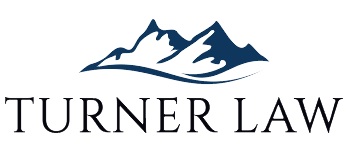The HOA Insurance Coverage Two-Step
 When damage occurs in condominiums or townhomes, one of the main questions is whose insurance is left holding the bag. Does the homeowner’s insurance pay? Or does the Homeowners Association’s? An Association’s responsibilities are laid out in their Covenants, Conditions, and Restrictions (“CC&Rs” or “Declaration”). However, when it comes to allocating insurance responsibilities between homeowners and the Association, older CC&Rs tend to be a problem.
When damage occurs in condominiums or townhomes, one of the main questions is whose insurance is left holding the bag. Does the homeowner’s insurance pay? Or does the Homeowners Association’s? An Association’s responsibilities are laid out in their Covenants, Conditions, and Restrictions (“CC&Rs” or “Declaration”). However, when it comes to allocating insurance responsibilities between homeowners and the Association, older CC&Rs tend to be a problem.
The problem is properly allocating coverage for property damage while keeping insurance costs reasonable. The permutations and combinations are many. In some instances, high Association deductibles place the repair cost burden on all owners or a single owner. Low Association deductibles can make the community insurance costs quite high while encouraging costly, negligent individual behavior. Even then, the various insurance carriers often point the finger at the other carrier and deny coverage.
Over the years, I’ve seen several examples of this. First, my personal favorite, snow/ice slides off an upper roof crashing through the glass sunroom of a condo several floors below. The Association insurer states sunroom is not a general common element and therefore not covered. Condo owner insurer states snow and ice coming from the roof (general common element) caused the damage and thus is not covered. Second example: toilet in townhome overflows due to the negligence of the owner. The Association insurance policy covers damage to common elements of that unit but the damage does not exceed the high Association deductible. The CC&Rs do not explicitly state that an owner is responsible for their own negligence and resulting damage; and therefore, the entire community picks up the tab. In the next example, which is the mirror of the previous example, the Association has a very low deductible and condo owners are not explicitly held responsible for their own negligence which causes damage to any common elements, defined as drywall out (as in the drywall and everything on the outside of the drywall is a common element). A small number of condo owners file numerous claims for minimal damage resulting in all owners paying higher assessments to cover high insurance costs. And let’s not forget the hail damage, hide-the-ball, wink and nod. A hail storm occurs 18 months ago. A condo sells in month 16. In month 19, the Association specially assesses current owners $5,000.00 each for their portion of the deductible. Current condo owner insurer denies coverage because the damage occurred before the coverage begin date. Previous insurer does not cover either because (a) the insurer is no longer insuring the property and/or (b) previous owners, who were very aware of the coming assessment, don’t want to pay it.
Revising old CC&Rs can reduce coverage disputes by clarifying responsibilities. Yet, revising CC&Rs can be expensive and time consuming for the Association’s lawyer to properly draft and time consuming for the HOA Board to poll owners about what they will consider fair. Even once the amendment is drafted, most CC&Rs require at least a majority of owners to approve modification and sometimes even the further consent of the first mortgage holder. Larger complexes tend to have an advantage in identifying insurance coverage issues because, with more owners, more of these issues have occurred over the years. However, the larger the community, the harder it is to get the required owner approval. An experienced management company can be helpful if an Association is considering an amendment because, much like a large community, the manager experiences the insurance coverage issues through many HOA clients.
What if modifying the CC&Rs or Declaration is not feasible? What is an HOA to do? Sometimes the older CC&Rs address these issues just not clearly. There is room for interpretation. In that case, reasonable policies and procedures can be written to shore up some, but probably not all, of the problem areas. The longer the policy has been in place, properly disclosed, and enforced, the more likely it is that the policy will be upheld by a court.
Insurance coverage issues tend to be some of the more problematic issues for townhome and condominium communities. Consider whether updating your Association’s CC&Rs and/or policies could help reduce overall costs.


